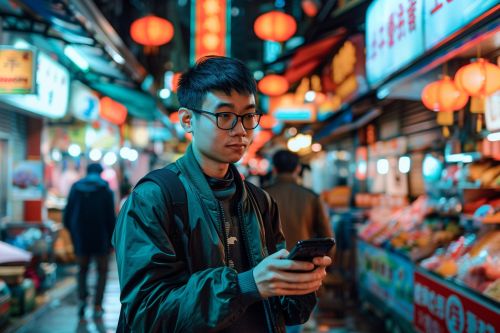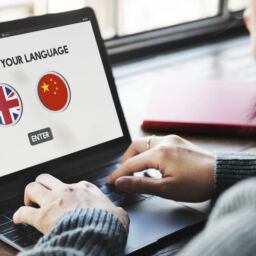

What makes some brands instantly successful in China, Korea, or Thailand? Is their success down to a stroke of luck, or is it the result of a carefully planned strategy? Understand the world of Asian marketing translations, and you will find the answers to these questions.
Marketing translations are not just about converting words from one language to another. They are more about subtly tailoring messages to resonate with local audiences while maintaining the brand’s intentions, style, and spirit. It is not an easy task to do!
Contents
Brief overview of Asian market
Asia is a continent with rapidly growing economies, led by giants like China and India, along with the Four Asian Tigers: South Korea, Taiwan, Singapore, and Hong Kong. They are marked by an increasingly powerful middle class and offer endless business opportunities worldwide.
However, breaking into these markets is not straightforward. Understanding their culture and preferences, which are quite different from Europe’s, takes a lot of effort. Many firms have stumbled over this challenge. Marketing translations will help you overcome it.
Chinese market
China brims with potential, but it is also full of challenges. Over 300 local languages and many dialects with scripts very different from the Latin alphabet are spoken in the country. Strong cultural roots and strict social norms mean global brands have to transform their campaigns to reach Chinese audiences completely.
Take social media, for instance. Forget about Facebook or X—in China, it is all about WeChat and Sina Weibo. Each of these platforms requires a different communication strategy that you need to learn.
Japanese market
In Japan, aesthetics and precision are highly valued. The Japanese appreciate high quality and attention to detail in products and services. This should be reflected in every marketing message. Subtlety also counts. Direct selling and aggressive marketing techniques rarely give the desired outcome. Japanese culture focuses on novelties and innovations— it quickly adapts to new technologies.
South Korean market
South Korea is a highly digitised society. Koreans are pioneers in using mobile technology and social media. They spend a lot of time online. K-pop and Korean dramas influence local trends. To enhance your chances of success, you need to leverage these elements in your brand’s campaigns.
Indian market
India is a country of linguistic and cultural diversity. Over 22 major languages and hundreds of dialects make reaching the audience challenging. Differences in customs vary significantly between regions. For Indian people, emotions in communication count, influencing how brands present themselves.
Each of these markets requires an individual approach and an in-depth understanding of the local culture. There is no one-size-fits-all strategy. Start by understanding and respecting local values and customs—you can not go wrong with that!



Localisation in marketing translation services
Localisation in marketing tailors your message so it sounds natural for audiences in a specific region. It is about transferring the entire essence of your brand into a different cultural world, while keeping its spirit and message intact. Use this method to truly connect with the hearts and minds of potential customers.
Take, for instance, a global fashion brand launching a campaign in Japan. Merely translating their English slogans into Japanese will not make a splash. Before you become recognisable in a new market, there is a lot of work to be done.
First, the brand needs to understand how the Japanese perceive fashion, what they wear, the local trends, and what kind of messages appeal to them. Make a successful market entry by collaborating with local celebrities, embracing Japanese aesthetics, and adapting colour schemes to local preferences.
Effective and ineffective marketing localisation examples
Marketing translations are about correct cultural translation. They require a thorough understanding of a country’s specifics. What works in one country may not bring results in another. For companies looking to break into a new market, this is an important step to remember.
India
Let’s look at some real-life examples. McDonald’s is a master of localisation. In India, where a large part of the population does not eat beef for religious reasons, they introduced the Chicken Maharaja Mac, which looks exactly like a Big Mac, but contains chicken. This is a prime example of how a brand can adapt its product without losing its identity.
Japan
KitKat, the globally known chocolate bar brand, became a phenomenon in Japan thanks to excellent product localisation. The brand introduced over 300 local flavours, including green tea, wasabi, and soy sauce. This strategy was so successful that the sweet treat became a significant part of local culture.
China
When KFC entered the Chinese market, they translated their famous slogan ‘Finger-lickin’ good’ as ‘Eat your fingers off’. This translation, though humorous, completely missed the intention of the original message. Moreover, it was not well-received by the Chinese audience.
Mercedes-Benz, entering the traditional Chinese market, wanted to use the shortened, friendlier name ‘Bensi’. However, they did not consider that in the local language, it means ‘die quickly’. This was definitely not the image a luxury car manufacturer wanted to promote…



Translation services in the Asian market: challenges
Entering Asian markets poses a real challenge for foreign brands. It is a test of flexibility and a check on whether they have done their homework: thorough local market research.
One of the biggest hurdles is language. Asian languages—Mandarin, Japanese, and Korean—make the accurate translation of content from European languages difficult. In Mandarin, for example, a single word often has several meanings that differ only in tone, which leads to misunderstandings or negative associations. Take the traditional and simplified Chinese word si, which means ‘four’ or ‘death’, depending on pronunciation.
Always consider cultural context differences. Statements that are humorous in one country might be completely misunderstood or even offensive in another. Direct communication, typical in Western ads, is sometimes perceived as aggressive in places like Japan, where subtlety is more valued.
How to adapt marketing materials to the culture of the target country?
How can you overcome these challenges? Conduct thorough market research, and understand local customs and values. This will help you avoid costly mistakes.
First: Use expert knowledge
Seek the assistance of the most talented linguists from the region and native speakers. They can best advise you on how to adjust your message to make it understandable and appealing to local consumers.
Second: Focus on localisation
Instead of just translating, localise your marketing materials. Adapt their content, colours, graphics, and format to match local expectations. Take South Korea as an example. The digital culture is highly developed there, and effective campaigns often use advanced technologies and social media to resonate with young, tech-savvy consumers.
Third: Celebrate local festivals
Leverage local celebrations to your advantage. Major festivals are a fantastic way to boost sales. If you capitalise on this opportunity well, you will get noticed by a larger number of new customers. The Hindu festival of lights—Diwali—or Chinese New Year are perfect times for promotions and launching new products. Pay attention to symbolism and create interactive campaigns on social media.
Fourth: Take advantage of local media
Be present on the most popular social media channels. In South Korea, it is KakaoTalk. This messaging app allows businesses to create personalised emoticons, stickers, and other interactive elements to increase brand recognition. In Japan, one of the leading platforms is Line, which offers the possibility of creating business accounts that enable direct communication with customers and offer promotions and special coupons.
Fifth: Test the outcome
Do not forget about testing. Before implementing your full marketing strategy, conduct focus group tests or pilot campaigns to see how your message is received by the local audience. Feedback from real consumers will provide valuable insights and help you avoid potential problems.



Translation Agency for the Asian Market
Are you wondering how your company can thrive in the Asian market? The answer is effective communication, taken care of by a professional translation agency. We specialise in overcoming language and cultural barriers. We will ensure that your message reaches the hearts and minds of Asian customers.
Our team of experts, including native speakers from various Asian countries, will work to ensure that your:
- marketing translations,
- websites,
- user manuals,
- specialised translations,
- multimedia materials,
- advertising spots,
- business proposals, and
- written translations
are culturally adapted.
Are you working on a project that requires a precise understanding of the Asian market? Look no further! We offer comprehensive localisation services to enable your business to effectively enter a new country. Forget about mismatched translations and cultural misunderstandings. Contact us, and we will help you reach new opportunities.
Images generated by AI.















